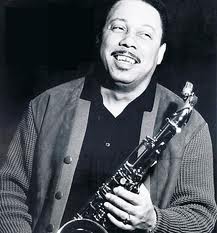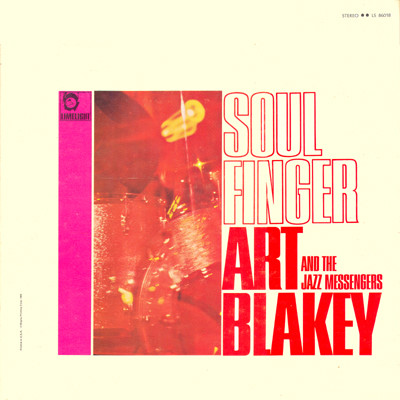Spot Session – Eli "Lucky" Thompson
Lucky wrote this blues head for Art Blakey, and it's a subtle feature: the drums have a four-measure figure throughout the head, which complements the melody.
- Recording: Art Blakey - Soul Finger
- Recorded on: April 21, 1965
- Label: Limelight (LM 82018)
- Concert Key: B-flat
- Vocal Range: , to
- Style: Swing (medium)
- Soprano Sax - Lucky Thompson
- Piano - John Hicks
- Bass - Victor Sproles
- Drums - Art Blakey
0:00
0:00
Buy MP3
Video
- Description
- Historical Notes
- Solos
- Piano Corner
- Bass Corner
- Drum Corner
- Guitar Corner
- Inside & Beyond
- Minus You
This blues head has a strong rhythmic punch on its own, but it's really built on an accompanying drum figure. This figure is four measures long, repeated throughout the head. It has a similar importance in this song as the bass line in Blue Bossa: you can play the head without it, but when it's there, a whole new dimension of the song is exposed. The figure starts with a triplet pick-up on the snare, followed by two cymbal hits on the "and" of beats 1 and 2; this pattern is repeated on the second measure, with the third setting up hits on the "and" of beats 1 and 3, and the fourth measure is the same as the first and second. The melody goes right along with the triplet pickups and some of the hits, varying the pickup rhythms a little. The turnaround has a little of that characteristic Lucky Thompson flair, with a modulation to G♭maj7 (the ♭VI) followed by a minor IV-V7: E♭m6-F7.
The four-measure drum figure is played three times as an intro. After the head is played once, there's a four-measure interlude—one more time through the drum figure—and the head is repeated going straight into the solos. The last two measures of the head are vamped and faded out.
Lucky Thompson plays soprano sax on this recording, in a high register. Measures 9 and 10 of the melody go quite high for trumpet and can be taken an octave down. Our E♭ lead sheet has the whole melody in the lower octave; alto or baritone saxophonists have the option of playing it an octave higher, except for the ninth and tenth measures.
The four-measure drum figure is played three times as an intro. After the head is played once, there's a four-measure interlude—one more time through the drum figure—and the head is repeated going straight into the solos. The last two measures of the head are vamped and faded out.
Lucky Thompson plays soprano sax on this recording, in a high register. Measures 9 and 10 of the melody go quite high for trumpet and can be taken an octave down. Our E♭ lead sheet has the whole melody in the lower octave; alto or baritone saxophonists have the option of playing it an octave higher, except for the ninth and tenth measures.
Spot Session was the only song released from this Art Blakey session. The rest of the "Soul Finger" album features the same rhythm section with Lee Morgan, Freddie Hubbard, and Gary Bartz. Lucky and Blakey had recorded together four months earlier on a Quincy Jones big band session. "Soul Finger" was only the second studio recording of John Hicks, whose debut was also with Blakey on the November 1964 album "'S Make It".
Related Songs
Email Send Spot Session to a friend
Send this page to a friend via email. Add your name or email in the first field. In the second, add one or more email addresses, separated by a comma.

Eli "Lucky" Thompson
June 16, 1923 – July 30, 2005
Saxophonist Lucky Thompson is one of the great treasures of jazz. He was born in Columbia, South Carolina, but was raised in Detroit, Michigan. He played in local groups with Hank Jones, Sonny Stitt and others. In August, 1943, when he was 19, he left Detroit with Lionel Hampton's Orchestra, eventually arriving in New York City. Still a teenager, his first recording date was with Hot Lips Page on March 18, 1944. Later in 1944 he started recording with both Lucky Millinder and Count Basie. Read more...
There was a problem.
...

